Importance Of Creative Art For Infants
![]()
- Posted by abrakadoodle.com.sg
- Categories Early childhood development
- Date 23 November 2022
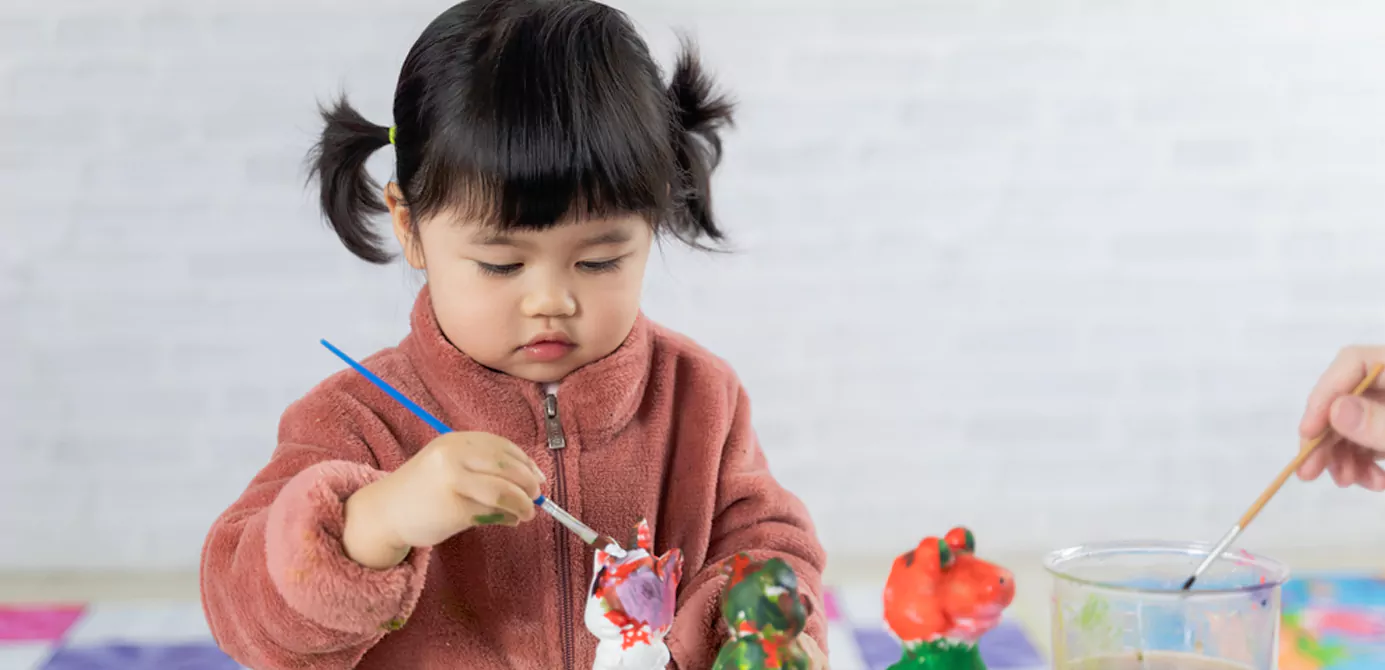
What do you do when your new baby is not sleeping, nursing, crying, getting a diaper change or having a bath? Most new parents will find themselves stumped for ideas that allow them to engage actively with their babies, and wish they could do something about it.
Another fact to deal with is, while there are plenty of art activities for a wide range of age groups, there is one tiny little group that is consistently left out — babies. Creative art activities for infants are oftentimes ignored.
This could be due to the absence of fine and gross motor skills in a baby or a baby’s lack of control over them. Or people believe that babies may not like to play with paint. Or feel that a mother is too tired to do things beyond what she is already doing. Besides, a new baby at home is quite overwhelming, to say the least.
The good news is, instead of just cuddling and cooing, singing soothing lullabies, you can choose from a list of creative art activities for infants. Actively play with your baby while she is awake in her cradle. Babies are born curious, and instinctively move their limbs or start looking around, exploring the strange new world they find themselves in.
This is exactly the right time to begin creating those special moments with your baby, which you will come to cherish as memories later on. You will be amazed by the deep sense of joy you will experience by indulging in a range of simple process art activities that will keep your baby engaged and help her experience the world with you.
Creative art for infants, for instance, is not just a visual activity but also can turn into a sensory experience for the baby and this can start when your baby is 6-month-old, if not earlier! There are lots of ideas to try out, including finger painting with child-safe homemade paints; creating mess-free masterpieces; and handprint keepsakes — all aimed at encouraging and nurturing creativity in your baby.
Table of Contents
ToggleIt’s never too early to start
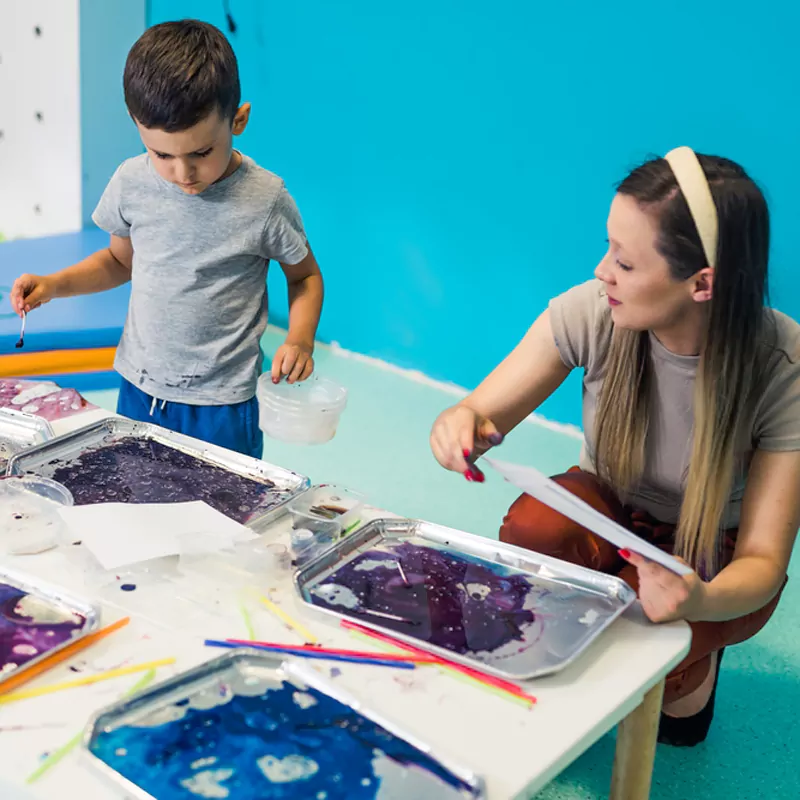
Process art has a set of gentle baby and art interactions that encourages the natural development of babies. These are not only sensory, exploratory and fun activities but also help develop both your baby’s physical and cognitive skills. importance of creative art.
To start with, process art activities can be easily adapted to create lots of opportunities for tummy time painting as well, helping strengthen the baby’s core muscles, and develop good neck control. So get ready to dive into the world of process art. Allow your baby to use her fingers and hands to explore what happens when she does things with paint, colour, and textures.
Mirror play with your baby
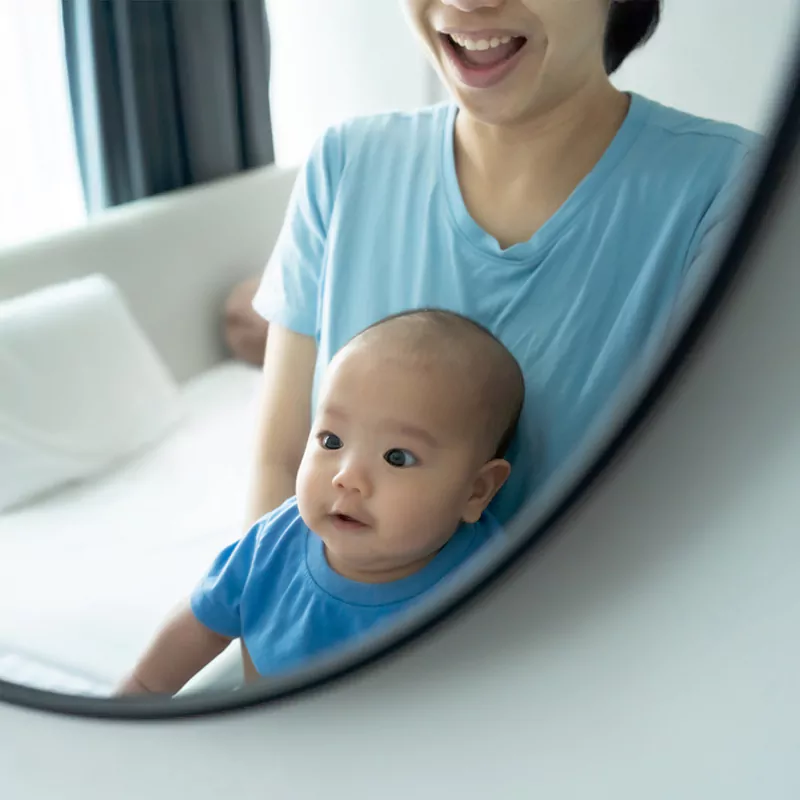
Your baby is curious by nature and is naturally attracted to human faces. So take advantage of a mirror — the simplest yet most enriching tool you can use to play with your baby. Mirror play develops and enhances her visual senses. If you think otherwise, just recall how your baby spends hours gazing at you lovingly with her big, unblinking eyes! You are totally hypnotized and can’t help but hold her gaze.
The mirror acts as a happy distraction and is the easiest sensory experience to set up as well. It is also a fun exercise to do while on her tummy. Regular tummy time helps develop strong back, neck, and shoulder muscles, which will be needed when your baby starts to roll over, sit up, crawl, and eventually walk. It also helps develop her gross motor skills.
As soon as your baby starts to focus on objects, begin to engage her in mirror play. During tummy time, you can slide a small mirror under her as motivation to push herself up to study her own face.
All babies come to love mirrors and looking at themselves, it is a great way to make tummy time more interesting and exciting for the baby. A baby will be able to recognize herself in a mirror when she is about nine months old. Just place an acrylic mirror on a blanket spread out on the floor and lay the baby so that she can see her reflection in it.
During bath time and when in the tub, it will be a good idea to hold up a mirror for your baby to look at. Take a minute or two to point to your face and your beautiful baby’s. Identify each other and name body parts while pointing at them. And speak to her.
What a way to play with water
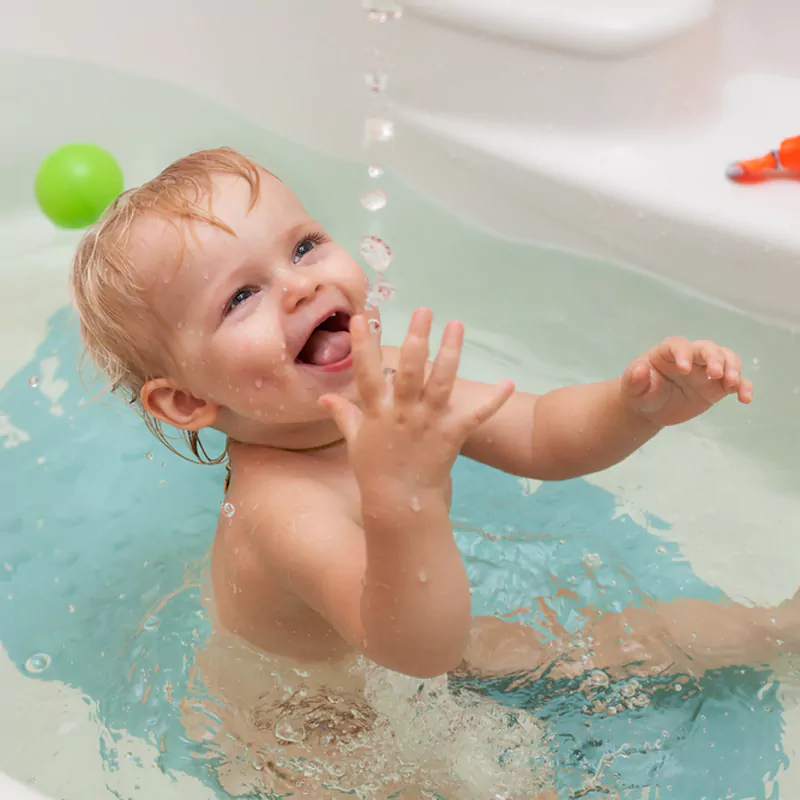
Water play is the easiest and simplest sensory experience to set up. Babies get to feel the sensation of water on their skin – warm or cold. Pour some lukewarm water into a shallow tray, add a little food colouring to it and let your baby splash in it with her hands while still laying down on her tummy.
The fun gets a little wilder when her older sibling joins the play, mistaking it for a puddle, he might decide to literally jump into the water, splashing water all over the baby, the towel, and the floor. You might be left with a lot of water to mop up. But it will be great fun with all the giggles and screams of joy.
Water play brings out the inner scientist in every child, this includes the baby too. Learning through water play, little toddlers and young children discover and begin to understand the many properties of water.
Whenever an older sibling joins the water play in a tub, the fun will be multiplied a hundredfold. Just by using toys, they get to discover which objects will sink and which ones will float. Find out what happens when they open the shower tap fully, and get to learn about water pressure and force. Figure out what happens when they pour water from a large container into a smaller one. By having fun and splashing about in water, babies and toddlers investigate these phenomena, as well as learn about cause and effect.
Block printing activity
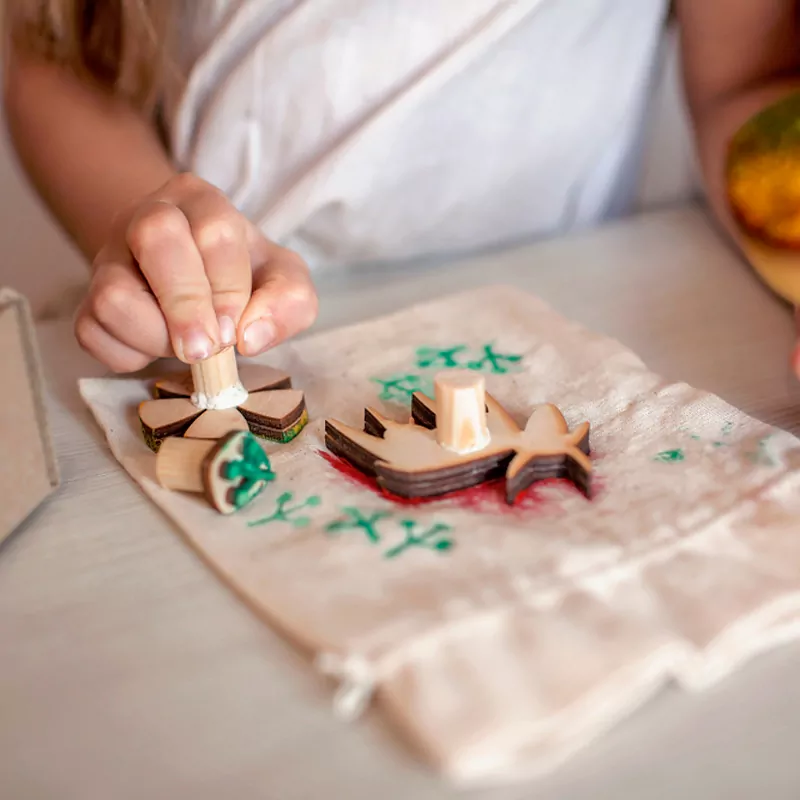
The materials you’d need for this activity are some paper, some child-safe homemade paint, masking tape, plastic blocks, small toys, a paper plate, and of course, an eager baby.
Secure the paper your baby will print on, to a board or a plastic sheet stuck on the floor. Use the masking tape to stick the paper, otherwise, your baby might reach out to grab it and start squeezing the paper thinking that it is food.
Spoon out blobs of child-safe paint onto a plate, dip the plastic block or a toy in the paint, and hand it over to your baby. She might study the block for a while, examining it closely for a long time. While it will be tempting to show the baby what to do by holding her hand and moving it, resist this urge.
Just wait and watch. She may start by hitting the paper with the block or just may want to move it around in circles. Let her do what she wants as this is a free exploration activity. Show her what she can do on a separate paper by all means. But allow her to explore her own motivation and direct her own play.
Keep conservation going all the time. Talk to her about what she is doing, tell her about colours, shapes and lines… the more you speak with her, the more new words she will hear and perhaps even remember. Keep the conversation going and keep it simple.
Finger painting for babies
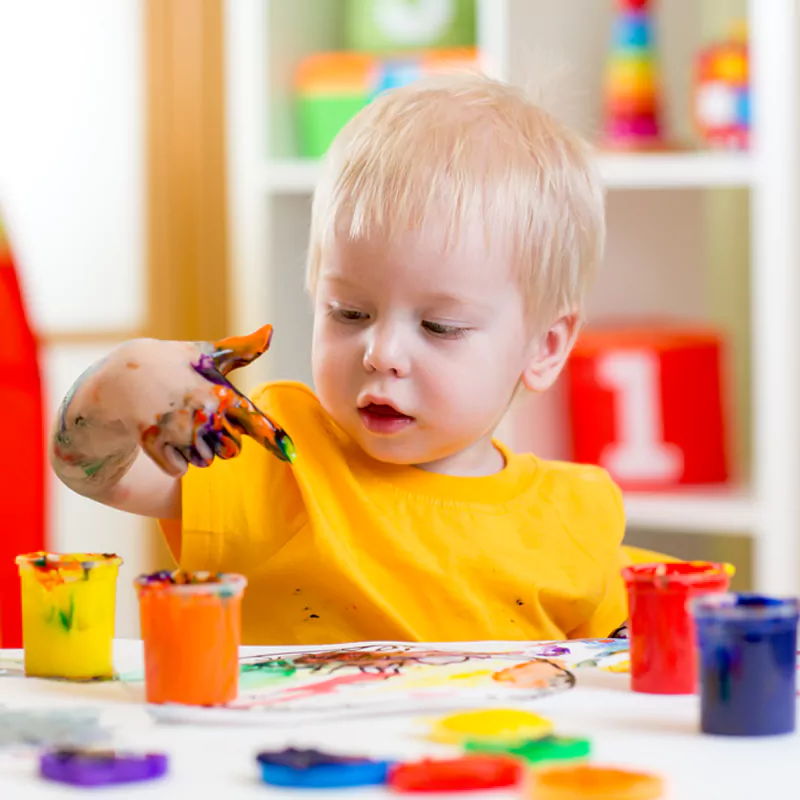
As babies do a lot of play on their tummies, you can use this time to introduce playing with colours. The best time to introduce finger painting is when your baby is able to sit up on her own. It is a good idea to find out if your baby will enjoy sitting in her highchair and exploring finger painting.
A highchair will be the ideal place to plonk a blob of child-safe finger paint and watch your baby unfold the magic of colours with her fingers. It’s a great way for your baby to learn and develop through sensory play. And makes it easy to clean up afterwards.
Finger painting is also a lot of fun. Babies and little children love having the chance to make a supervised mess. The feeling of wet, squishy paint on their fingers is also a relaxing experience. Finger painting acts as a much-needed vent for letting go of negative emotions like anger and anxiety.
It’s worth remembering that finger painting makes a wonderful fine motor skills development activity, helping babies and little children build up strength in their fingers. Eventually, helping them to hold a pencil correctly and learn to write.
Playing with jelly when on the belly
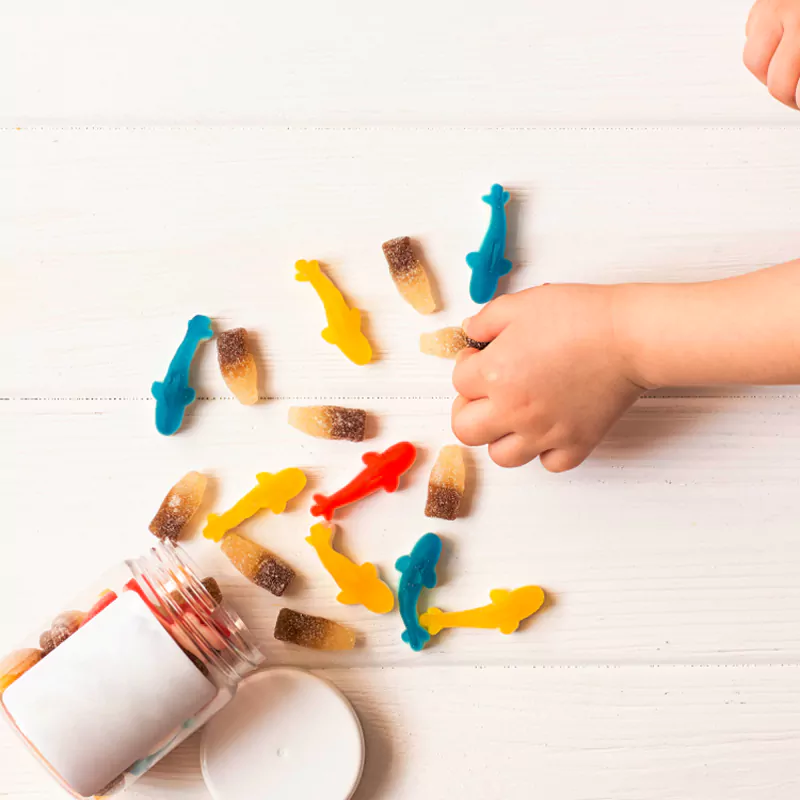
Babies love to mouth everything they can lay their little hands on. Jelly is the safest sensory play accessory to have and you can build upon the sensory experience it delivers.
All you need to create an exciting toy to play with is a sturdy zip-lock plastic bag, and some cold jelly from your fridge and combine it with those small squeezy balls that bounce back into shape after being squeezed.
Your baby will enjoy and have a great time squishing the cold jelly and moving the squeezy balls between her hands and fingers. The surprising part you will notice is this kind of activity can keep a baby entertained for about 15 minutes, which is a pretty longish time for a baby when she is just
under 6 months old!
Fun paper plate painting
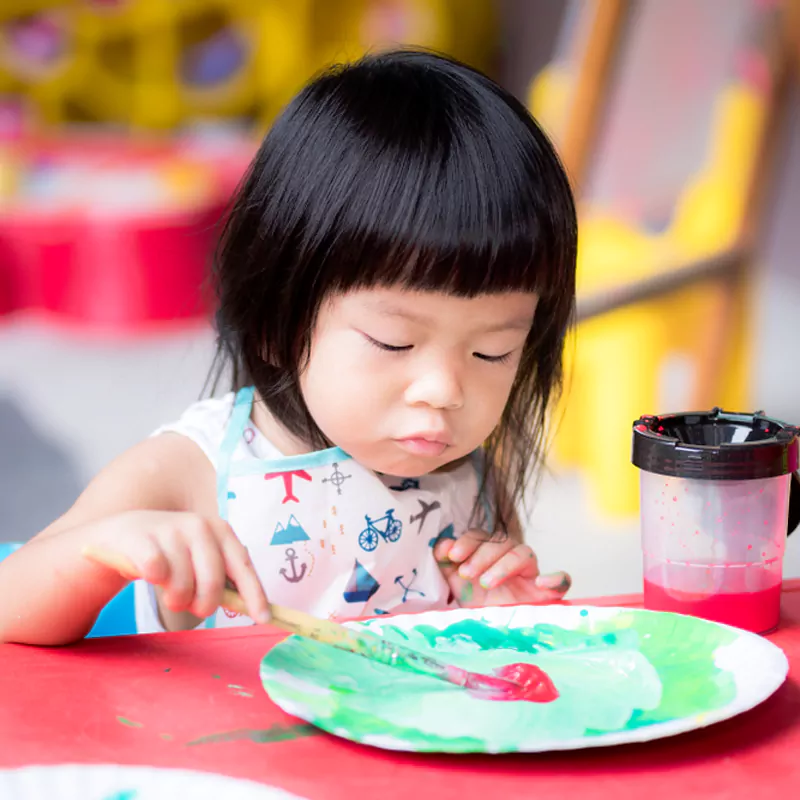
Set this activity up on the floor. Set up two paper plates, one for your baby and one for you. On a third plate, pour out homemade, child-safe paint and hand over a broad paintbrush to your little toddler. Remember to cover the floor with a plastic sheet or a discarded shower curtain before you start. As this activity can encourage your baby to try and move around and work on her gross motor skills.
She may swirl the colours with the brush or mix up the paints on the plate. She may even want to paint with the other end of the paintbrush. It really does not matter, the idea is the process and not the end result. Homemade paints are easy to wash and wipe away the stains, so keep a damp washcloth handy to clear up the mess.
Talking and interacting with your baby will help her understand the physical and mental processes she is going through and develop her vocabulary. Continue the play with your baby once she has explored on her own. You could show her different painting techniques like making circles, dots, stripes and squares with the paint.
As your baby gets older, you can extend this activity to include focusing on patterning and colour mixing by letting your child add paint to the plate herself and use the mix in whichever way she wants to.
Always supervise, because babies and small children need constant supervision.
Painting with plastic balls
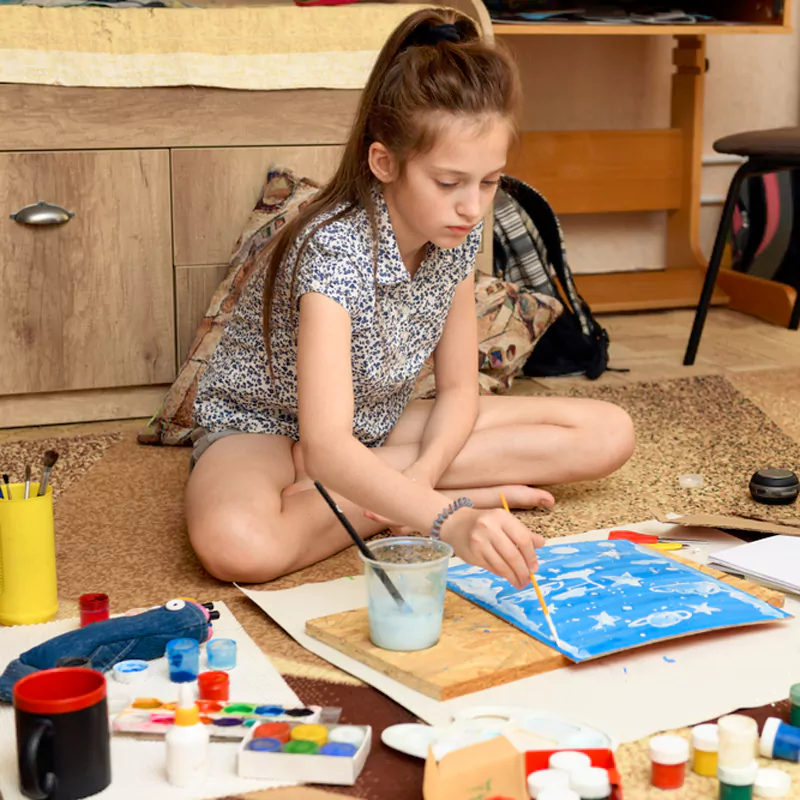
When your baby reaches toddler age, you could involve her in a fun way to create art. Even though you may not be an artistic person, your toddler daughter will help develop the art muscle which you always wanted but didn’t know how.
Here is what you can do and it is so simple to set up. Cut and paste a sheet of paper into a plastic tray. Then ask your toddler to pick two or three colours of her choice. Add the plastic balls to the tray and roll them around by picking up the tray and tilting it in different directions.
Do this process art exercise with her. The results of this activity are open-ended, but both you and your toddler will get to experience creating something beautiful. And this fun project is so messy and active at the same time!
Repeat this activity as often as you like because little children need repetition to learn and understand. They gain new insights each time they repeat the same activity. And always talk to your child about what she is doing. “See the blue line you made!”, “Are you swirling the paint around? ” “What are the colours you used”?
Creating a keepsake
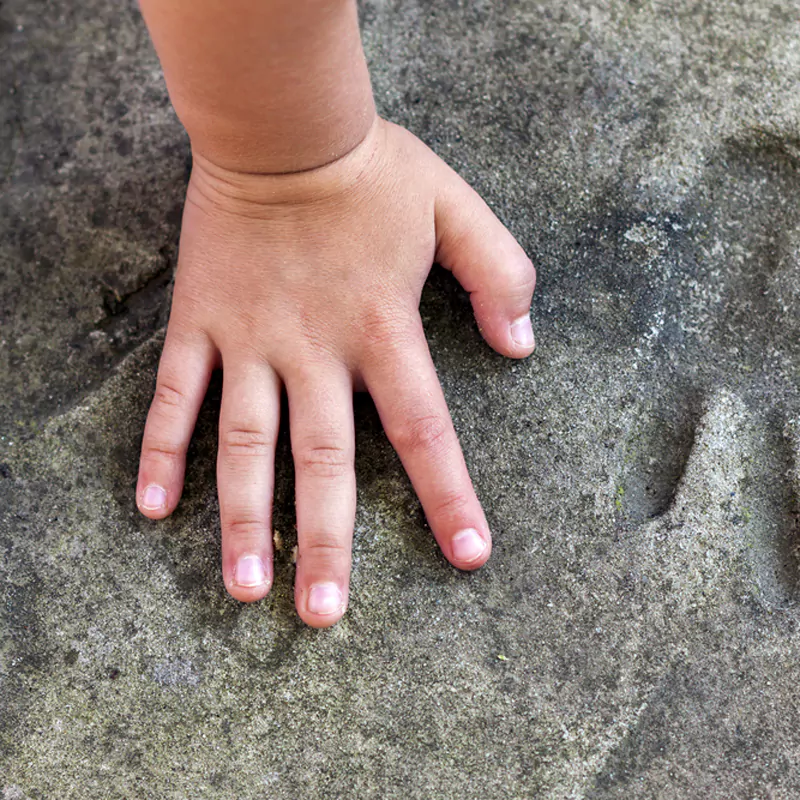
When your baby can stand up and move around on her own, it is time to create a handprint keepsake. A framed wall hanging of the palmprints of your baby when she was a year and a half old. Or handprints of your entire family will be a wonderful keepsake. A family heirloom comes to mind.
Knead some dough using wheat flour and roll it into a ball, press it down into a shape of flatbread. Make it big enough for two palm prints, enough to fit the left palm and the right one side by side. Help your child to press one hand firmly into the dough, repeat with the other hand. Once you are happy with the handprints leave the dough to dry out.
If humidity is high, you can dry the dough in an oven set at 100 degrees for about 3 hours. Remember to turn the dough over halfway through that time. If you like to hang the handprint instead of framing it, make a hole at the top before you bake the dough.
Once your handprints dry out, use acrylic paint and paint the handprint. Leave the choice of colour to your daughter. She might choose a purple or a dark pink. Either way, it will be a memento that will last a very long time, perhaps even be handed down from generation to generation!
Make child-safe, taste-safe paint
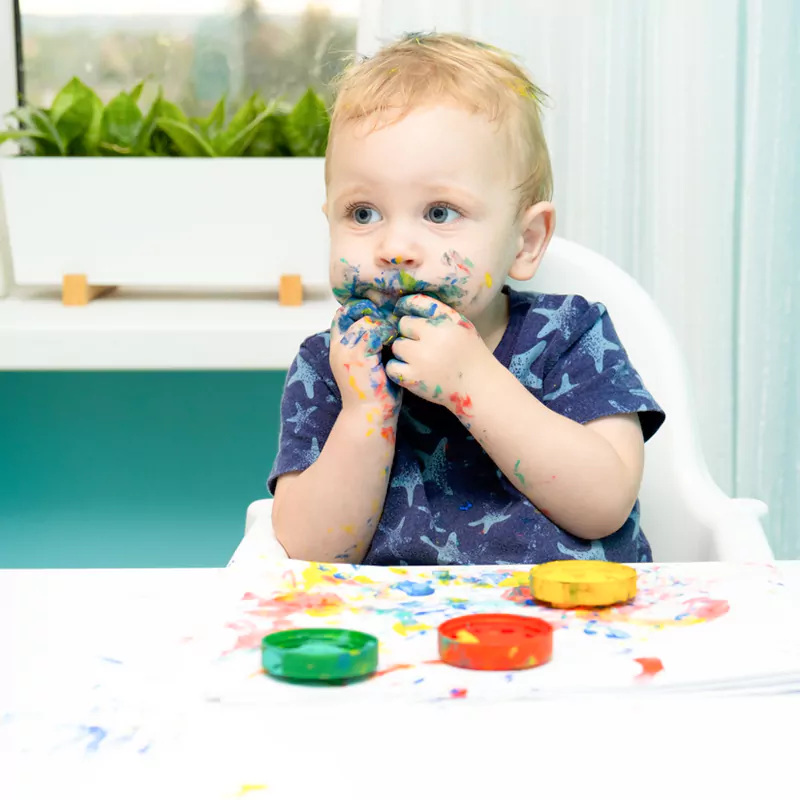
For very young children or for anyone who is likely to try a taste of the paints, it’s best to use a child-safe recipe that uses only food items as ingredients straight from your kitchen cupboard.
Using corn flour as a base for your finger paint will be ideal because it is a simple and easy-to-make. Measure out two cups of corn flour – around 250g. Place the corn flour in a jug and add five cups of cold water. Mix together until all the corn flour has completely dissolved.
Pour this mixture into a saucepan and heat gently, stirring all the time to ensure there are no lumps. After a few minutes the base will begin to thicken. Split this base out into three or four bowls and add a few drops of different colours to each and create several different colours to paint with.
If you feel the paint is too thick, dilute it by adding a little extra cold water. You are now ready for an unforgettable sensory painting experience with babies and toddlers using paint that is not only child-safe but also taste-safe!
You can use the paints immediately or pour them into separate bottles and store them for a week max, before the paint goes bad.
Go eco-friendly, use fruit & veggies
Make child safe and taste-friendly paint for babies. Instead of using food colouring to make paint, swap it with fruit and veggies which have strong colours — spinach, blackberries, dried apricot, watermelon…
Here is how
Stew each fruit or veggie separately in a little water, purée with a hand blender then pass it through a sieve. Leave it overnight in a fridge.
Stir before you use these natural paints for great colours quickly. Or you will have to trash the paint afterwards, as, unlike food colouring, paint made from fruit and veggies will go bad really fast.
About Abrakadoodle
Process Art learning experiences inspire toddlers and young children to think differently, be innovative, and explore new ways to learn about interesting things found in the real world. Changing the way a child discovers and imagines. Igniting her mind to think, play and learn like never before.
If you like to enrol your child in our creative art classes or find out more about why creative art ideas for infants is important, give Abrakadoodle a call. Or better still, make an appointment with the head of a centre near you. Get hands-on exposure to an experience that will make you see art in a way that adds value to your child’s life right from the time she is just a baby!
Please note: Abrakadoodle classrooms are thoroughly sanitized every day — the tables, the chairs, the children’s activity stations and everything else the child might touch is made safe and clean. They also wear a mask, wash their hands frequently, and practice social distancing.
Frequently Asked Questions
As a parent, being creative and artistic with your parenting skills can help you add an exciting twist to early parenting rituals, making it easier to engage your infant in creative art activities that nurture their overall development.
The importance of creative art in early childhood:
1. It stimulates babies' sensory and exploratory abilities.
2. It aids in the development of their physical and emotional awareness.
3. It helps to develop gross and fine motor skills.
4. It promotes the development of neural networks in the brain.
5. It alleviates infant anxiety and improves their mood.
Some of the popular art activities for infants include:
1. Colour mixing on a paper plate
2. Finger painting
3. Play-dough modelling
4. Block printing
5. Playing with jelly beans
6. Watercolour painting
7. Painting paper cups to build a castle
8. Creating a keepsake art
A creative art program is carefully designed to help children learn complex subjects more easily, explore new techniques, and express their ideas more freely.
The significance of creative art in childhood development:
- Fosters cognitive abilities and improves memory
- Strengthens fine and gross motor skills
- Stimulates multisensory abilities
- Improves literary and communication abilities
- Promotes social interaction among family and friends.
Babies enjoy simple art activities such as recognising shapes and colours, scribbling, play-dough modelling, splashing watercolours on canvas, and finger painting. Since creative art activities are naturally exciting for toddlers, infants tend to become more inclined towards playing with or experimenting with various art materials, resulting in flexing muscles, stirring neural networks, and devising new ways to pursue routine activities with greater excitement. As a result, infants regard art as a pleasurable yet enriching learning experience.
Babies are naturally curious, which makes them instinctively move their limbs and roll their eyes in order to discover the world around them. Simple art interactions with babies include sensory and exploratory art activities such as recognising the colours of daily objects, hand-printing and finger painting using natural home-made paints, playing with colour blocks, splashing watercolour paints, and playing with colourful jelly beans.
You may also like

The Impact Of Colour On A Child’s Development
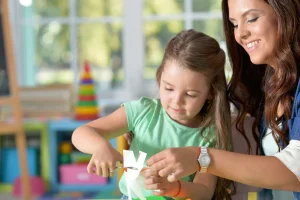
How Collage-making Activity Helps A Child To Think Creatively

